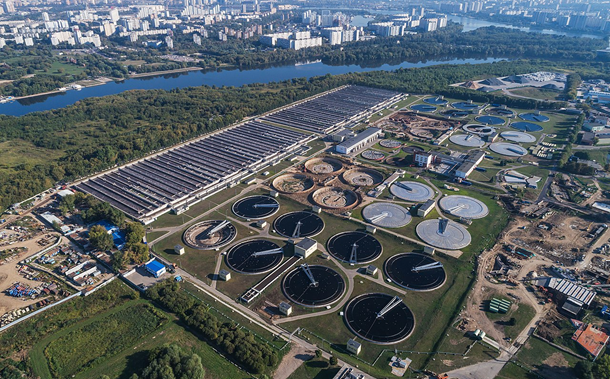Numerical Investigation for Selection the Optimal Flexural Strengthening Strategy of Reinforced Concrete Beams
Downloads
Reinforced concrete is the most widespread material that is used in structural applications. In structural systems, concrete beams can become damaged due to aging and increased design loads. Furthermore, for architectural purposes, specific dimensions may be imposed on concrete beams. For these reasons, it always needed to strengthen these beams. In this study, a numerical study was conducted to simulate the strengthening and improving of the flexural strength of reinforced concrete beams using three techniques: carbon fiber (CFRP sheets), steel plate, and external bars. The numerical analysis was verified with previous experimental studies. For the parametric study, the thickness, number of layers, and tensile strength were adopted for the CFRP strengthening technique. For the steel plates, the effect of changing the thickness and number of layers and yield stress was studied. Finally, for the additional external bars, different ratios of longitudinal reinforcement were investigated. After conducting numerical analysis of the studied models, the results showed a clear increase in the ultimate load and stiffness of the beams when strengthened with carbon fiber and steel plate, especially when increasing the tensile strength and yield strength, which was the most influential parameter, compared to a very limited effect of the number of layers due to the separation between the layers, especially for CFRP. However, both strategies showed brittle failure without clear ductility. Using additional external bars or increasing the ratio of longitudinal reinforcement was the most influential strengthening strategy in terms of increasing the beams’ capacity for bending and ductility.
Downloads
[1] Al-Quraishi, H., Kammash, K. N. A., & Abdul-Husain, Z. A. (2022). Bond Strength Behavior in Rubberized Concrete. International Journal of Sustainable Construction Engineering and Technology, 13(1), 130–136. doi:10.30880/ijscet.2022.13.01.012.
[2] Dawood, M. H., Izzet, A. F., & Khudair, B. H. (2022). Performance of concrete thrust block at several burial conditions under the influence of thrust forces generated in the water distribution networks. Journal of the Mechanical Behavior of Materials, 31(1), 473–483. doi:10.1515/jmbm-2022-0048.
[3] Siddika, A., Mamun, M. A. Al, Alyousef, R., & Amran, Y. H. M. (2019). Strengthening of reinforced concrete beams by using fiber-reinforced polymer composites: A review. Journal of Building Engineering, 25, 100798. doi:10.1016/j.jobe.2019.100798.
[4] Mohod, M. V. (2012). Performance of steel fiber reinforced concrete. International Journal of Engineering and Science, 1(12), 1-4.
[5] Aykac, S., Kalkan, I., Aykac, B., Karahan, S., & Kayar, S. (2013). Strengthening and Repair of Reinforced Concrete Beams Using External Steel Plates. Journal of Structural Engineering, 139(6), 929–939. doi:10.1061/(asce)st.1943-541x.0000714.
[6] Cairns, J., & Rafeeqi, S. F. A. (2002). Analysis of reinforced concrete beams strengthened by external unbonded bars. Magazine of Concrete Research, 54(2), 141–153. doi:10.1680/macr.2002.54.2.141.
[7] Duthinh, D., & Starnes, M. (2004). Strength and Ductility of Concrete Beams Reinforced with Carbon Fiber-Reinforced Polymer Plates and Steel. Journal of Composites for Construction, 8(1), 59–69. doi:10.1061/(asce)1090-0268(2004)8:1(59).
[8] Abdulkhudhur, R., Al-Quraishi, H., & Abdullah, O. H. (2020). Effect of steel fiber on the shear transfer strength across a crack in reactive powder concrete. IOP Conference Series: Materials Science and Engineering, 737(1), 12001. doi:10.1088/1757-899X/737/1/012001.
[9] Liu, L., Jia, C., He, J., Zhao, F., Fan, D., Xing, L., Wang, M., Wang, F., Jiang, Z., & Huang, Y. (2015). Interfacial characterization, control and modification of carbon fiber reinforced polymer composites. Composites Science and Technology, 121, 56–72. doi:10.1016/j.compscitech.2015.08.002.
[10] Karnoub, A., Huang, H., & Antypas, I. R. (2020). Investigation of composite materials supported by carbon fiber fabric (TFC) in pre-cracked concrete beams. Journal of Physics: Conference Series, 1679(4), 42040. doi:10.1088/1742-6596/1679/4/042040.
[11] Augustino, D. S. (2024). Shear Performance of Deep Concrete Beams with Openings Using Waste Tyre Steel Fibres: FEM and ANN Analysis. Civil Engineering Journal, 10(8), 2422–2449. doi:10.28991/CEJ-2024-010-08-02.
[12] Hadi, M. N. S., Sarhan, M. M., & Teh, L. H. (2018). Behavior of concrete beams reinforced with steel plates. ACI Structural Journal, 115(5), 1307–1315. doi:10.14359/51702445.
[13] Thamrin, R. (2018). Effect of strengthening method and development length on flexural strength of RC beams with steel plates. Journal of Engineering Science and Technology, 13(11), 3781–3794.
[14] Zhang, Y., Wang, H., Qin, Y., Huang, S., & Fan, W. (2023). Experimental and analytical studies on the flexural behavior of steel plate-UHPC composite strengthened RC beams. Engineering Structures, 283, 115834. doi:10.1016/j.engstruct.2023.115834.
[15] Nayak, S., Kizilkanat, A., Neithalath, N., & Das, S. (2019). Experimental and Numerical Investigation of Fracture Behavior of Particle-Reinforced Alkali-Activated Slag Mortars. Journal of Materials in Civil Engineering, 31(5), 4019043. doi:10.1061/(asce)mt.1943-5533.0002673.
[16] Thamrin, R., & Sari, R. P. (2017). Flexural Capacity of Strengthened Reinforced Concrete Beams with Web Bonded Steel Plates. Procedia Engineering, 171, 1129–1136. doi:10.1016/j.proeng.2017.01.474.
[17] Khatulistiani, U. (2021). Influence of Steel Bars for External Confinement on Compressive Strength of Concrete. International Journal of GEOMATE, 20(82), 2052. doi:10.21660/2021.82.j2052.
[18] Lee, S. H., Shin, K. J., & Kang, T. H. K. (2015). Flexural strengthening of continuous concrete beams using external prestressed steel bars. PCI Journal, 60(1), 68–86. doi:10.15554/pcij60.1-01.
[19] Lee, S. H., Lee, H. Du, & Shin, K. J. (2018). Flexural analysis of posttensioned reinforced concrete beams using external steel bars. Indian Journal of Engineering and Materials Sciences, 25(6), 487–497.
[20] Roberts, T., & Hajikazemi, H. (1989). Theoretical Study of the Behaviour of Reinforced Concrete Beams Streng-Thened by Externally Bonded Steel Plates. Proceedings of the Institution of Civil Engineers, 87(1), 39–55. doi:10.1680/iicep.1989.1452.
[21] Gul, A., Alam, B., Ahmed, W., Wahab, N., Shahzada, K., Irfan Badrashi, Y., Wali Khan, S., & Khan, M. N. A. (2021). Strengthening and Characterization of Existing Reinforced Concrete Beams for Flexure by Effective Utilization of External Steel Elements. Advances in Structural Engineering, 24(2), 243–251. doi:10.1177/1369433220950614.
[22] Abdulkhudhur, R., Lafta, M. J., & Al-Quraishi, H. (2024). Estimation the flexural-tensile strength of fiber reinforced concrete members. AIP Conference Proceedings, 2864(1), 50005. doi:10.1063/5.0186183.
[23] Tao, Y., & Chen, J. F. (2015). Concrete Damage Plasticity Model for Modeling FRP-to-Concrete Bond Behavior. Journal of Composites for Construction, 19(1), 4014026. doi:10.1061/(asce)cc.1943-5614.0000482.
[24] Abdulkhudhur, R., Al-Quraishi, H., & Elwi, M. (2024). Numerical analysis of concrete-encased concrete filled steel tube beams. AIP Conference Proceedings, 3219(1), 20049. doi:10.1063/5.0236329.
[25] Abdulkhudhur, R., Elwi, M., & Al-Quraishi, H. (2025). Axial Compression Behavior of Concrete-Encased CFST Columns. Civil Engineering Journal (Iran), 11(6), 2255–2266. doi:10.28991/CEJ-2025-011-06-05.
[26] Skulborstad, A. (2024). Overview of Elastic Orthotropic Fiber Reinforced Polymer Modular Damage Model for Library of Advanced Materials for Engineering (LAMÉ). Office of Scientific and Technical Information (OSTI). doi:10.2172/2516848.
[27] Zhang, W., Lin, J., Huang, Y., Lin, B., & Liu, X. (2025). State of the art regarding interface bond behavior between FRP and concrete based on cohesive zone model. Structures, 74, 108528. doi:10.1016/j.istruc.2025.108528.
[28] Wu, K. Q., & Yu, T. X. (2001). Simple dynamic models of elastic-plastic structures under impact. International Journal of Impact Engineering, 25(8), 735–754. doi:10.1016/S0734-743X(01)00017-3.
[29] Dawood, M.H., Izzet, A.F., & Khudair, B.H. (2023). Optimal Bedding Selection with the Specific Soil Type According to the Thrust Forces Generated in the Water Distribution Networks Using the Restraining Joint System. Current Trends in Geotechnical Engineering and Construction. ICGECI 2022. Springer, Singapore. doi:10.1007/978-981-19-7358-1_5.
[30] Balamuralikrishnan, R., & Jeyasehar, C. A. (2009). Flexural Behavior of RC Beams Strengthened with Carbon Fiber Reinforced Polymer (CFRP) Fabrics. The Open Civil Engineering Journal, 3(1), 102–109. doi:10.2174/1874149500903010102.
[31] Oh, B. H., Cho, J. Y., & Park, D. G. (2003). Static and Fatigue Behavior of Reinforced Concrete Beams Strengthened with Steel Plates for Flexure. Journal of Structural Engineering, 129(4), 527–535. doi:10.1061/(asce)0733-9445(2003)129:4(527).
- Authors retain all copyrights. It is noticeable that authors will not be forced to sign any copyright transfer agreements.
- This work (including HTML and PDF Files) is licensed under a Creative Commons Attribution 4.0 International License.![]()














